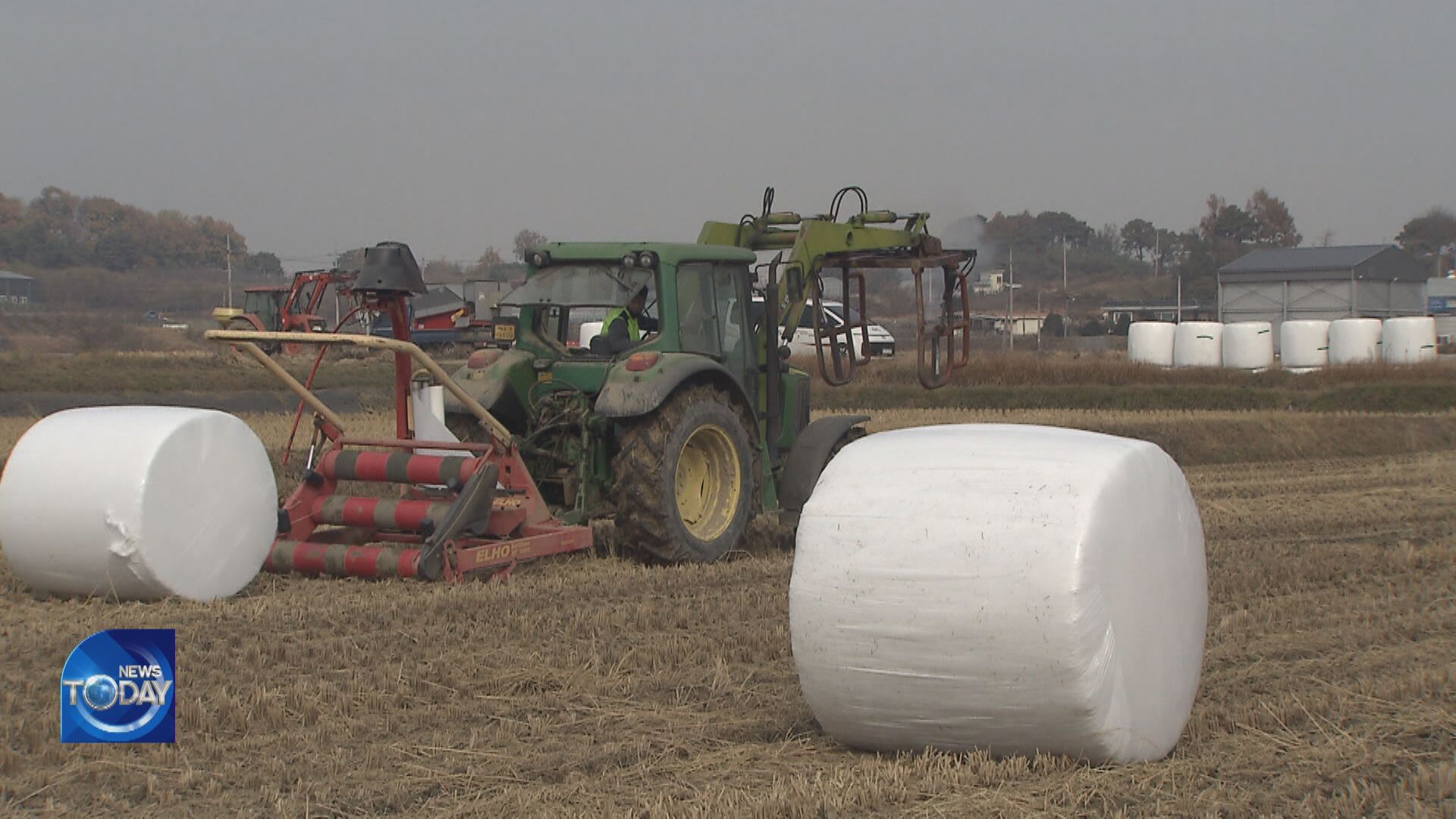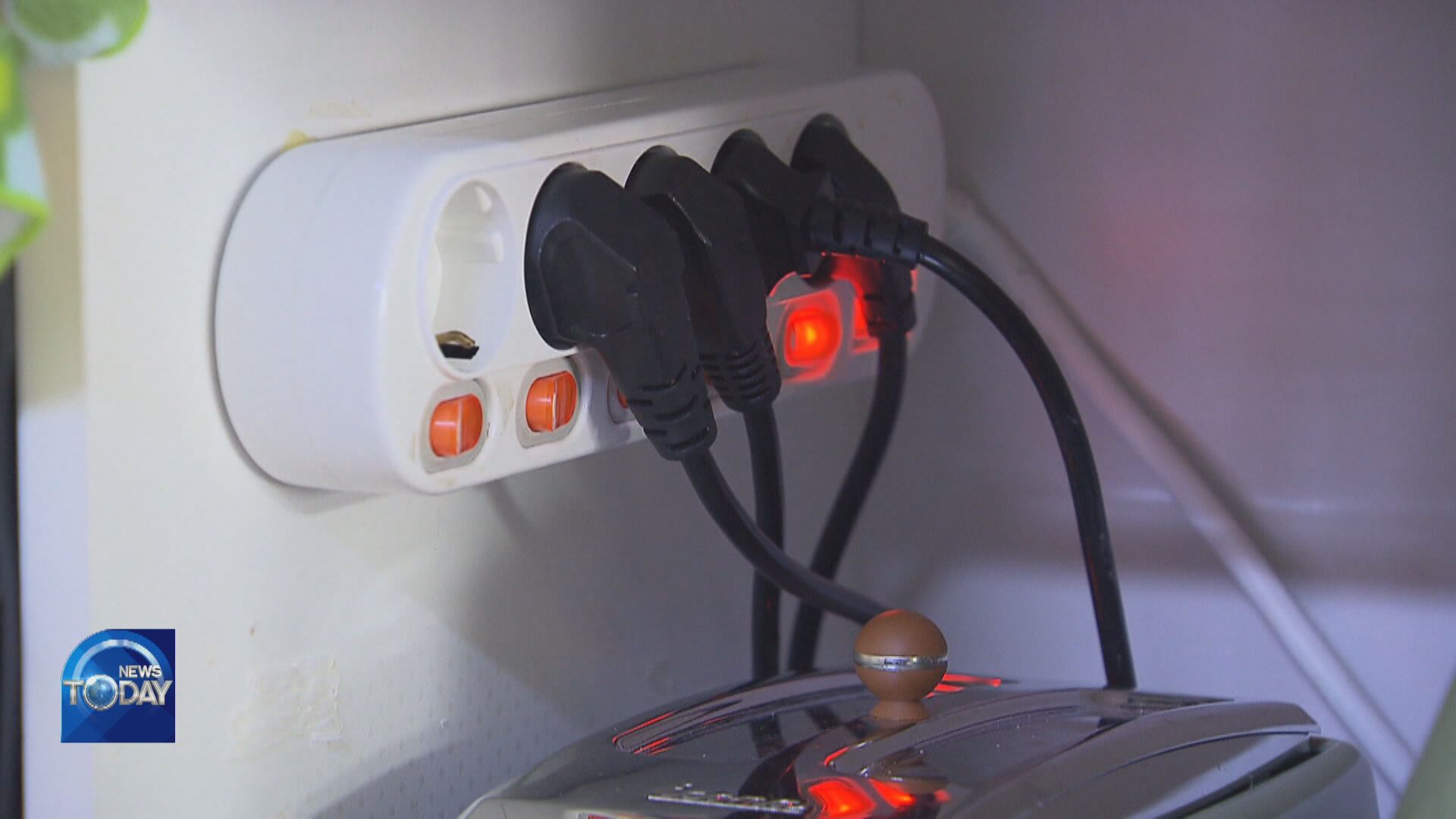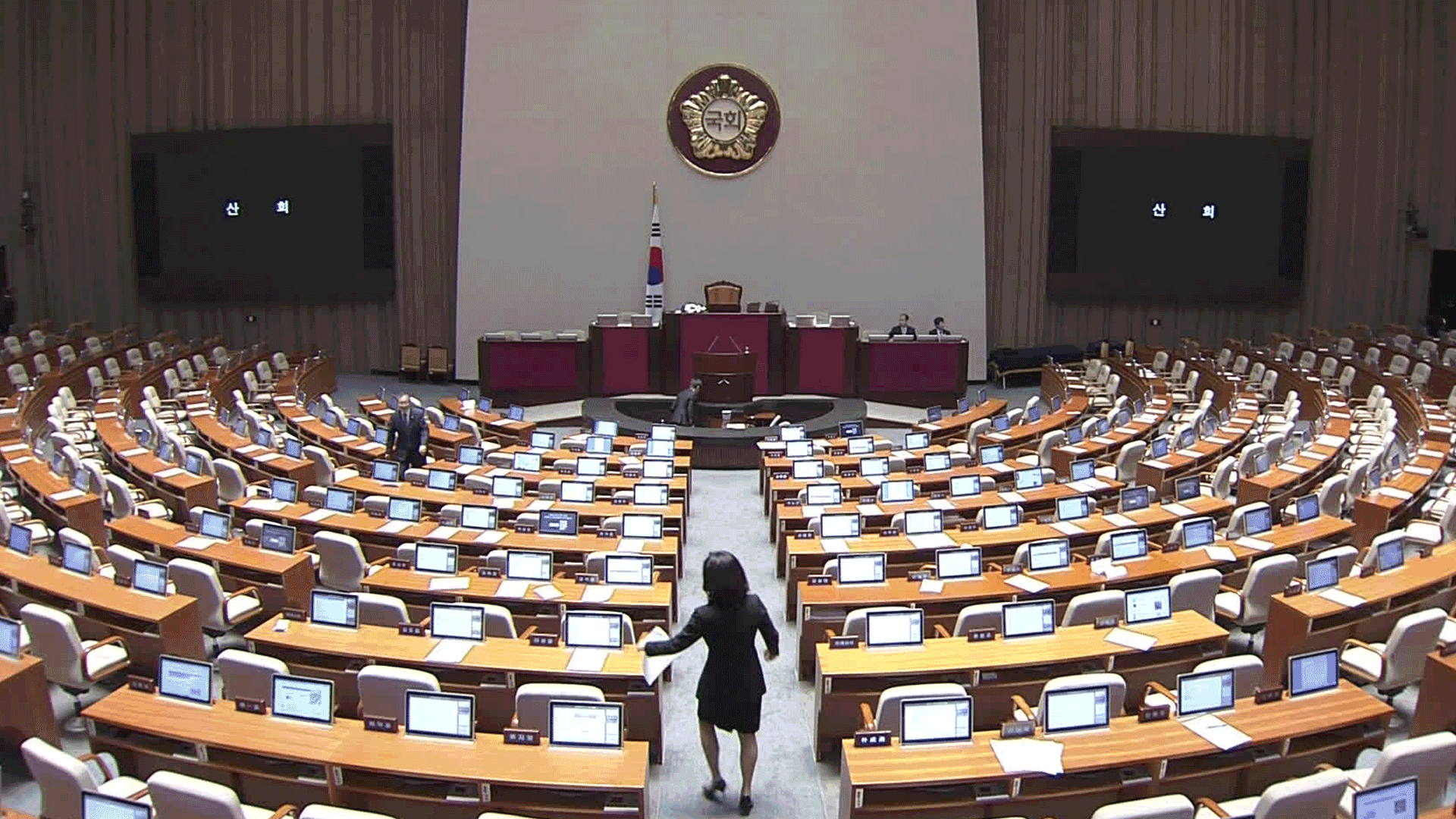FARMERS STRUGGLE AMID HIGH STRAW PRICES
입력 2022.11.14 (15:04)
수정 2022.11.14 (16:45)
읽어주기 기능은 크롬기반의
브라우저에서만 사용하실 수 있습니다.
[Anchor Lead]
Straw is supplied to livestock farms as animal feed. Straw prices are surging, as prices of imported hay are soaring amid high oil prices and rising foreign exchange rates as well as unstable international situations. This is adding to difficulties for farmers.
[Pkg]
Straw is being collected on fields after harvest. A farm machine compresses collected straw into round, giant stacks. They are wrapped in plastic sheets tightly. Low in fat and protein, but rich in fiber, straw is a popular animal feed on livestock farms. It has grown expensive recently.
[Soundbite] Hong Jin-woong(Livestock Farmer) : "Many farmers have turned to straw, as imported hay prices have surged significantly. So it is more difficult to buy straw than before."
Imported hay posted a double-digit gain in price this year. Prices of some products have even jumped nearly 40 percent. Hay prices are fluctuating due to unstable international politics including the Ukraine War as well as high oil prices and rising foreign exchange rates. This is why domestic straw is in greater demand, which has caused price surges in turn. Prices of straw have soared from 60,000 won per 500 kilograms to 100,000 won.
[Soundbite] Oh Kyung-sik(Livestock farmer) : "Prices of feed have all jumped more than 30 percent. We spend the money we earn from selling cows to cover feed expenses."
Faced with the difficulty in buying straw, some livestock farmers plant and grow alternative crops like rye on fields after harvesting rice.
[Soundbite] Shin Cheol-soo(Livestock Farmer) : "There is a shortage in straw for cows. It is expensive and difficult to buy."
In order to increase the supply of straw, farmers are asking the government to temporarily postpone the program that provides financial support for rice fields where straw is left uncollected for natural decomposition.
Straw is supplied to livestock farms as animal feed. Straw prices are surging, as prices of imported hay are soaring amid high oil prices and rising foreign exchange rates as well as unstable international situations. This is adding to difficulties for farmers.
[Pkg]
Straw is being collected on fields after harvest. A farm machine compresses collected straw into round, giant stacks. They are wrapped in plastic sheets tightly. Low in fat and protein, but rich in fiber, straw is a popular animal feed on livestock farms. It has grown expensive recently.
[Soundbite] Hong Jin-woong(Livestock Farmer) : "Many farmers have turned to straw, as imported hay prices have surged significantly. So it is more difficult to buy straw than before."
Imported hay posted a double-digit gain in price this year. Prices of some products have even jumped nearly 40 percent. Hay prices are fluctuating due to unstable international politics including the Ukraine War as well as high oil prices and rising foreign exchange rates. This is why domestic straw is in greater demand, which has caused price surges in turn. Prices of straw have soared from 60,000 won per 500 kilograms to 100,000 won.
[Soundbite] Oh Kyung-sik(Livestock farmer) : "Prices of feed have all jumped more than 30 percent. We spend the money we earn from selling cows to cover feed expenses."
Faced with the difficulty in buying straw, some livestock farmers plant and grow alternative crops like rye on fields after harvesting rice.
[Soundbite] Shin Cheol-soo(Livestock Farmer) : "There is a shortage in straw for cows. It is expensive and difficult to buy."
In order to increase the supply of straw, farmers are asking the government to temporarily postpone the program that provides financial support for rice fields where straw is left uncollected for natural decomposition.
■ 제보하기
▷ 카카오톡 : 'KBS제보' 검색, 채널 추가
▷ 전화 : 02-781-1234, 4444
▷ 이메일 : kbs1234@kbs.co.kr
▷ 유튜브, 네이버, 카카오에서도 KBS뉴스를 구독해주세요!
- FARMERS STRUGGLE AMID HIGH STRAW PRICES
-
- 입력 2022-11-14 15:04:45
- 수정2022-11-14 16:45:11

[Anchor Lead]
Straw is supplied to livestock farms as animal feed. Straw prices are surging, as prices of imported hay are soaring amid high oil prices and rising foreign exchange rates as well as unstable international situations. This is adding to difficulties for farmers.
[Pkg]
Straw is being collected on fields after harvest. A farm machine compresses collected straw into round, giant stacks. They are wrapped in plastic sheets tightly. Low in fat and protein, but rich in fiber, straw is a popular animal feed on livestock farms. It has grown expensive recently.
[Soundbite] Hong Jin-woong(Livestock Farmer) : "Many farmers have turned to straw, as imported hay prices have surged significantly. So it is more difficult to buy straw than before."
Imported hay posted a double-digit gain in price this year. Prices of some products have even jumped nearly 40 percent. Hay prices are fluctuating due to unstable international politics including the Ukraine War as well as high oil prices and rising foreign exchange rates. This is why domestic straw is in greater demand, which has caused price surges in turn. Prices of straw have soared from 60,000 won per 500 kilograms to 100,000 won.
[Soundbite] Oh Kyung-sik(Livestock farmer) : "Prices of feed have all jumped more than 30 percent. We spend the money we earn from selling cows to cover feed expenses."
Faced with the difficulty in buying straw, some livestock farmers plant and grow alternative crops like rye on fields after harvesting rice.
[Soundbite] Shin Cheol-soo(Livestock Farmer) : "There is a shortage in straw for cows. It is expensive and difficult to buy."
In order to increase the supply of straw, farmers are asking the government to temporarily postpone the program that provides financial support for rice fields where straw is left uncollected for natural decomposition.
Straw is supplied to livestock farms as animal feed. Straw prices are surging, as prices of imported hay are soaring amid high oil prices and rising foreign exchange rates as well as unstable international situations. This is adding to difficulties for farmers.
[Pkg]
Straw is being collected on fields after harvest. A farm machine compresses collected straw into round, giant stacks. They are wrapped in plastic sheets tightly. Low in fat and protein, but rich in fiber, straw is a popular animal feed on livestock farms. It has grown expensive recently.
[Soundbite] Hong Jin-woong(Livestock Farmer) : "Many farmers have turned to straw, as imported hay prices have surged significantly. So it is more difficult to buy straw than before."
Imported hay posted a double-digit gain in price this year. Prices of some products have even jumped nearly 40 percent. Hay prices are fluctuating due to unstable international politics including the Ukraine War as well as high oil prices and rising foreign exchange rates. This is why domestic straw is in greater demand, which has caused price surges in turn. Prices of straw have soared from 60,000 won per 500 kilograms to 100,000 won.
[Soundbite] Oh Kyung-sik(Livestock farmer) : "Prices of feed have all jumped more than 30 percent. We spend the money we earn from selling cows to cover feed expenses."
Faced with the difficulty in buying straw, some livestock farmers plant and grow alternative crops like rye on fields after harvesting rice.
[Soundbite] Shin Cheol-soo(Livestock Farmer) : "There is a shortage in straw for cows. It is expensive and difficult to buy."
In order to increase the supply of straw, farmers are asking the government to temporarily postpone the program that provides financial support for rice fields where straw is left uncollected for natural decomposition.
이 기사가 좋으셨다면
-
좋아요
0
-
응원해요
0
-
후속 원해요
0

















이 기사에 대한 의견을 남겨주세요.